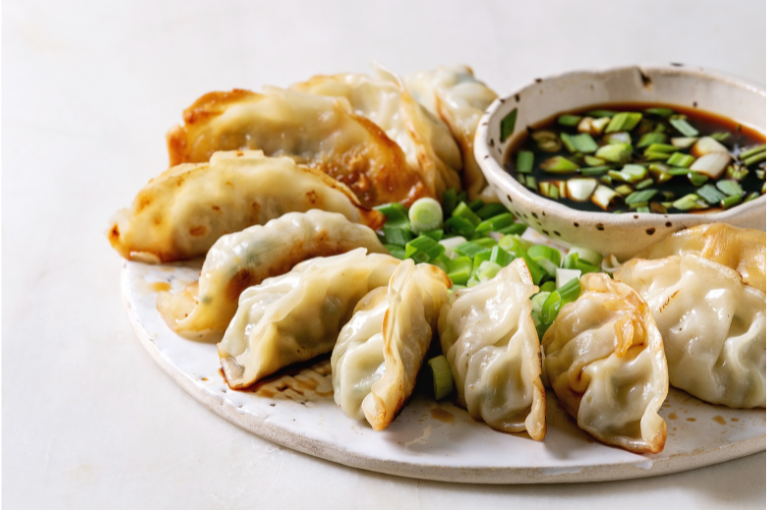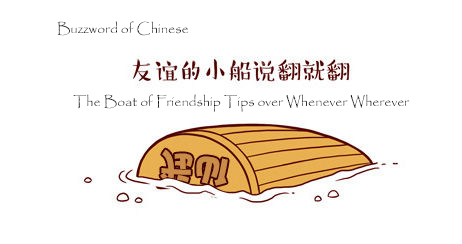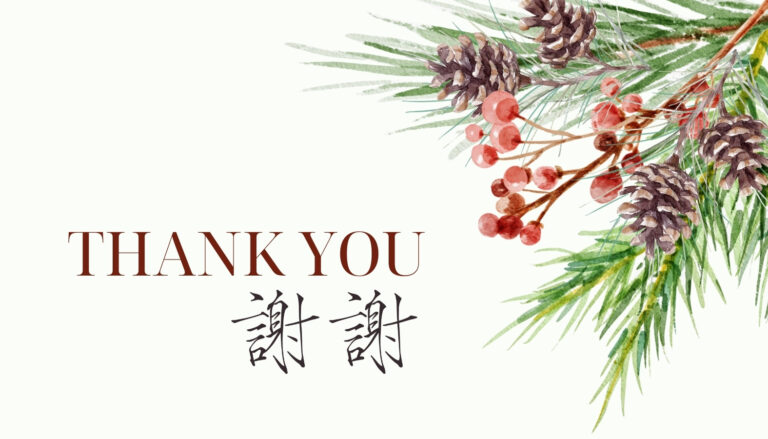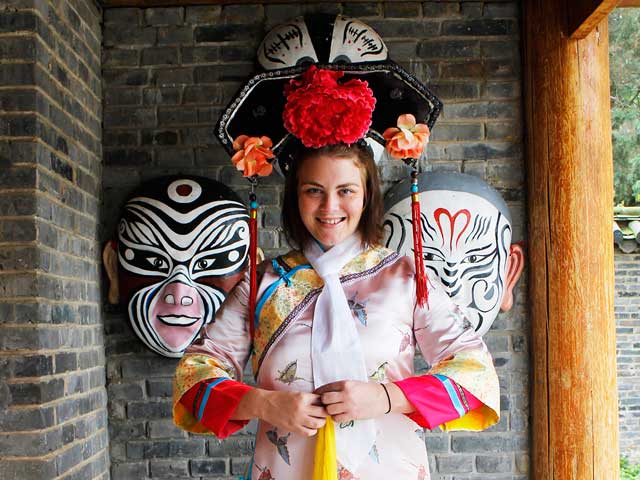Chinese Dumplings for Lunar New Year
Dumplings 饺子 are a staple in Chinese cuisine, but with Spring Festival 春节 coming up, they are even more symbolic. Because of the crescent and plump shape, dumplings look very similar to the gold ingots historically used for currency. So, during Chinese New Year, Chinese people will eat dumplings because they represent wealth for the coming year. Plus, they are delicious.
With Lunar New Year coming up, here is a recipe for 50 Chinese Leek and Pork Dumplings 猪肉韭菜饺子.
Chinese Leek and Pork Dumplings: 猪肉韭菜饺子
Preparation time: 1-2 hours
For 4 people
Ingredients (材料 cáiliào):
- Flour (1kg)
- Minced pork (500g)
- Chinese leek (500g)
- Ginger (100g)
- Soy sauce (4 tablespoons)
- Salt (1 tablespoon)
- Sugar (2 tablespoons)
- Cooking oil (3 tablespoons)
- MSG (3 tablespoons) [optional]
- 面粉 (2斤) miànfěn (liǎng jīn)
- 猪肉碎 (1斤) zhūròu suì (yī jīn)
- 韭菜 (1斤) jiǔcài (yī jīn)
- 姜 (100克) jiāng (yībǎi kè)
- 酱油 (4勺) jiàngyóu (sì sháo)
- 盐 (1勺) yán (yī sháo)
- 糖 (2勺) táng (liǎng sháo)
- 调和油 (3勺) tiáohéyóu (sān sháo)
- 味精 (3勺) wèijīng (sān sháo) [可选 kěxuǎn]
Instructions (做法步骤 zuòfǎ bùzhòu):
Dough (面团 miàntuán):
1. 首先把面团准备好。将面粉放入碗里,加入1/3的水。揉到面粉柔软,而且不粘手。这个揉面的步骤叫做”和面”。
Translation. Let’s start by preparing the dough. In a large bowl, put the flour and add ⅓ of water. Knead the dough with your hands until it combines to a smooth non-sticking dough. The action of kneading the dough is called 和面 (be careful, 和 is not pronounced “hé” here)!
2. 让面团 醒15到30分钟。
Translation. Let it rise for 15-30 minutes. This is called 醒面.Filling (馅儿 xiànr):
1. 韭菜洗干净后切碎。
Translation: Wash the Chinese leek, and chop finely.
2. 把姜剁碎。
Translation: Mince the ginger.
3. 碗中放入韭菜、姜和猪肉碎。
Translation: In a large bowl, combine the Chinese leek, the ginger and the minced pork.
4. 加入盐、糖、酱油、调和油、如果有的话,可以加味精。搅拌均匀。
Translation: Add the salt, sugar, soy sauce, cooking oil, MSG if available. Mix it together.
Dumplings (饺子 jiǎozi):
1. 把面团切成小剂子,擀好。用点面粉,防粘连。
Translation: Cut the dough into small pieces 剂子, and roll them 擀. Use some flour to avoid sticking.
2. 将馅儿放在饺子皮上,不要太多!
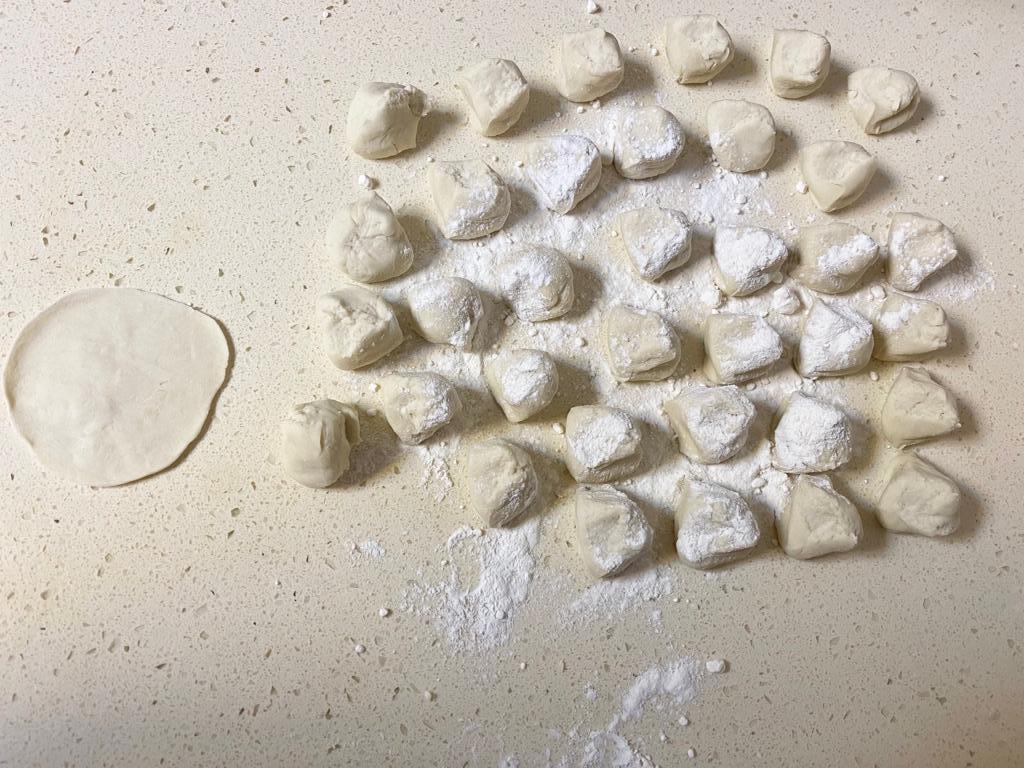
Translation: Put the filling on the dumpling wrapper 饺子皮, but not too much!
3. 包成饺子。这个步骤有点难!将两侧饺子皮捏合。在右侧部分,用食指将它向中间方向夹紧两次。左侧也一样。包好了!
Translation: Wrap the dumpling. This is the tricky part! Join the two sides of the dumpling wrapper together. On the right side of the dumpling wrapper, create two pinches, one at a time, with your index finger. Do the same on the left side. And you are done wrapping your dumpling!
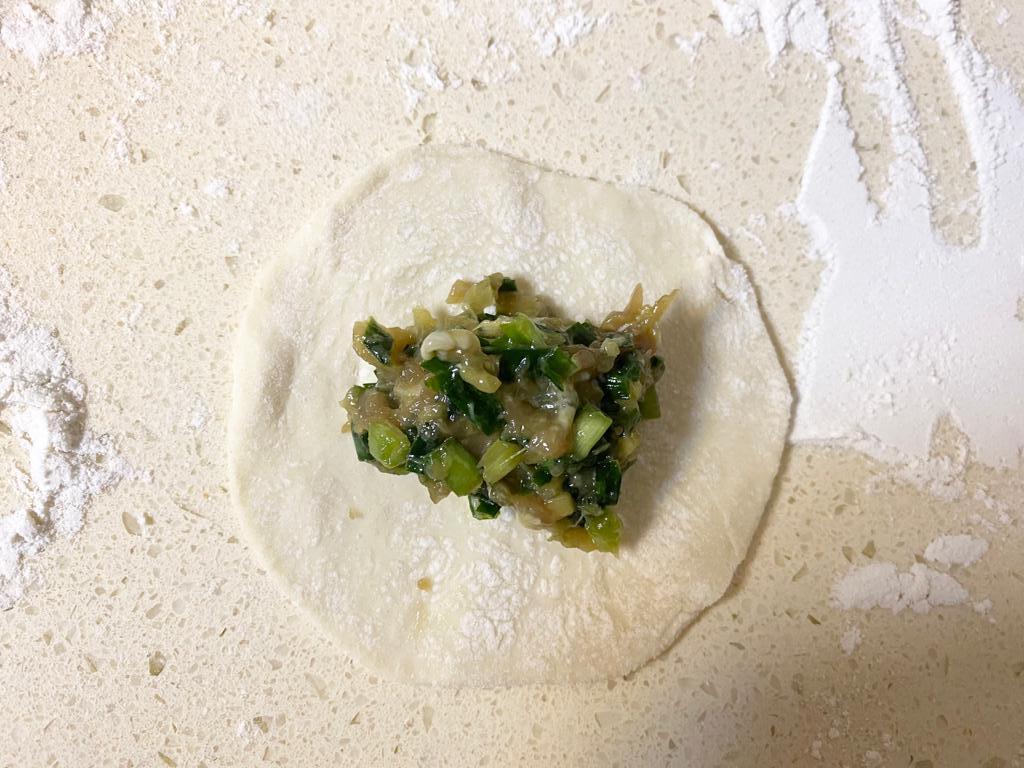
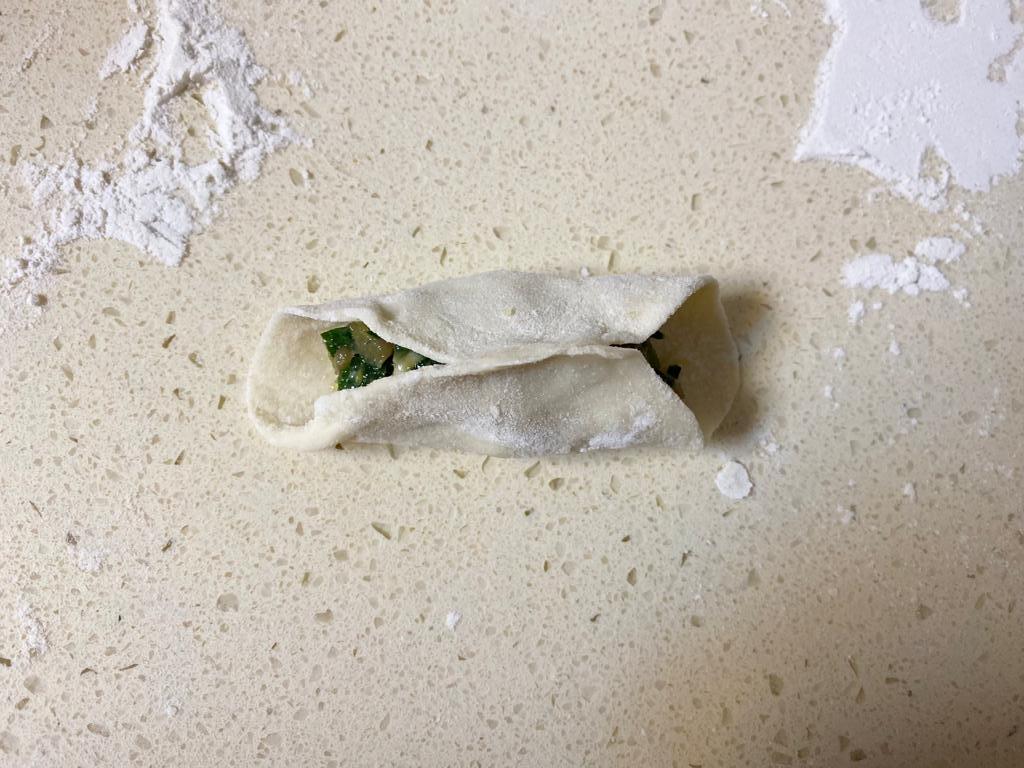
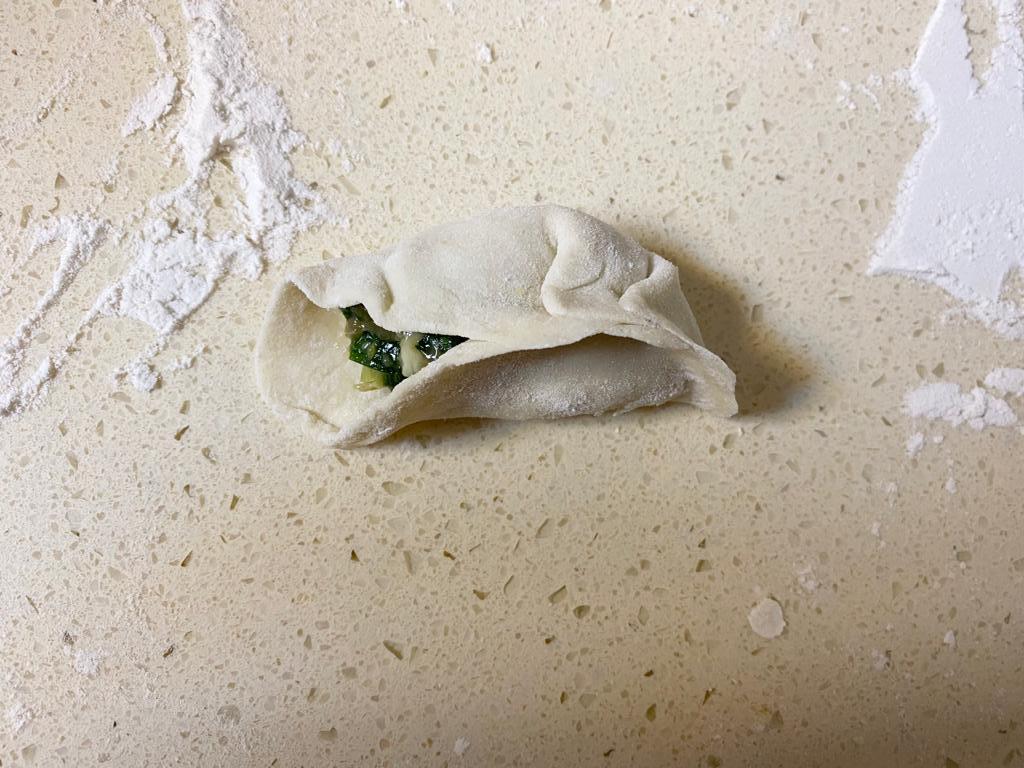
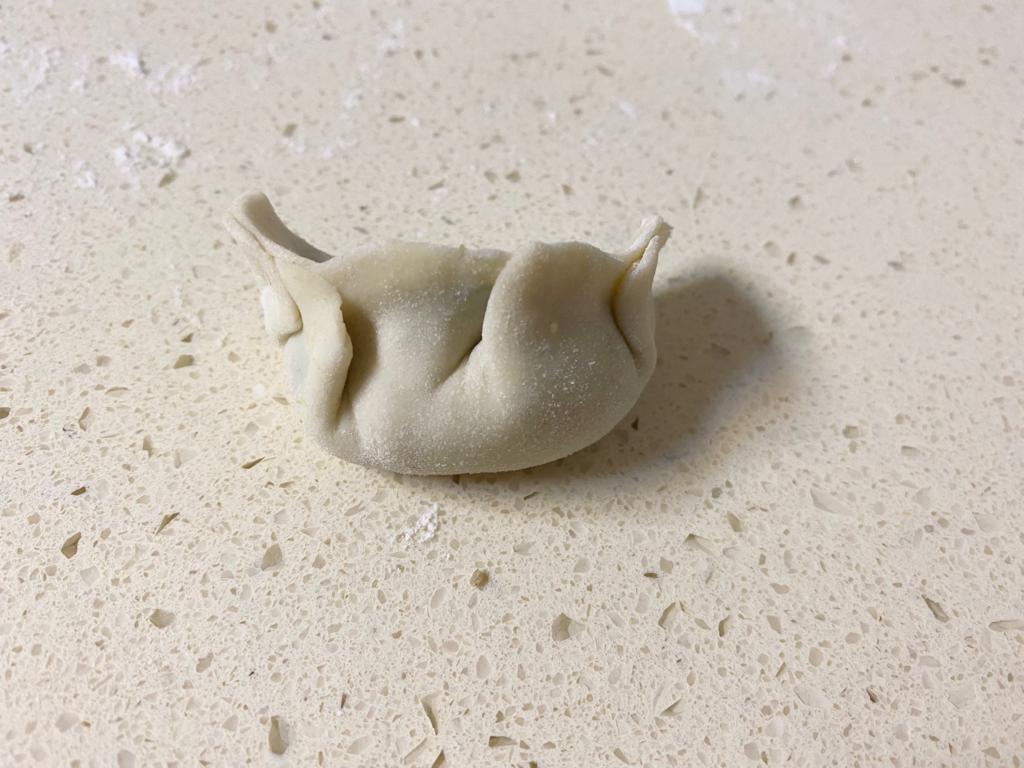
For Fried Dumplings (煎饺 jiān jiǎo):
1. Put a thin layer of oil in a skillet and add the dumplings
2. After a couple of minutes, add water so it covers ¾ of the dumplings.
3. Wait 10-15 min until the water evaporates. Lower the heat towards the end, so it doesn’t burn.
4. When the dumplings look golden (as in the picture), it’s ready!
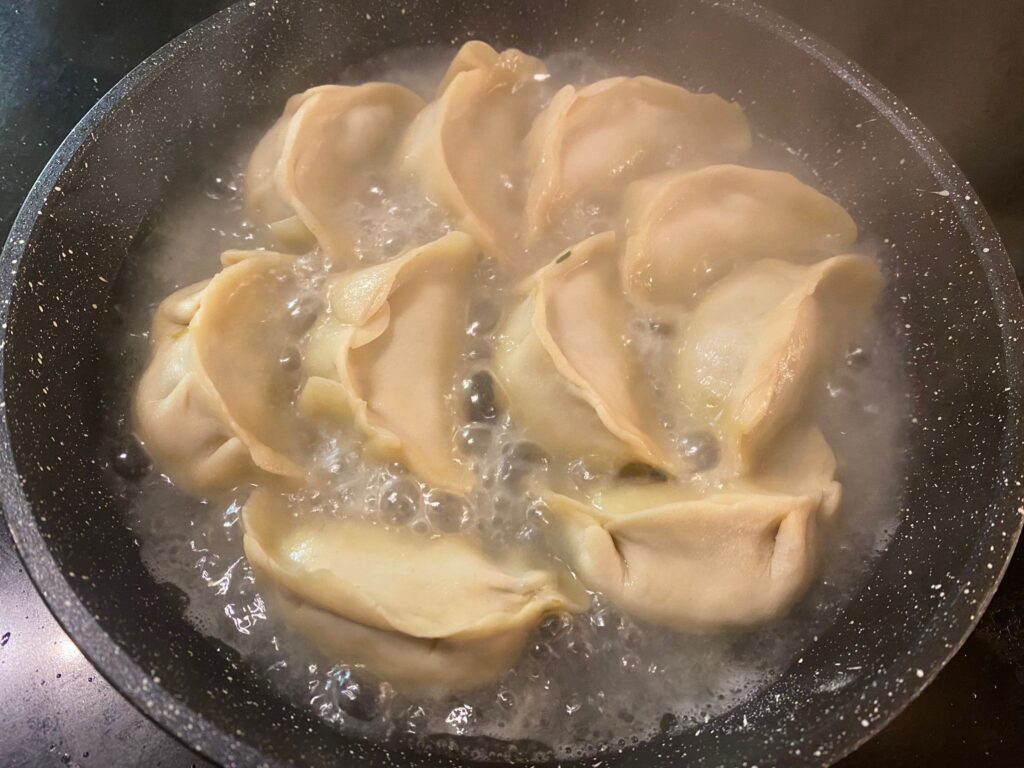
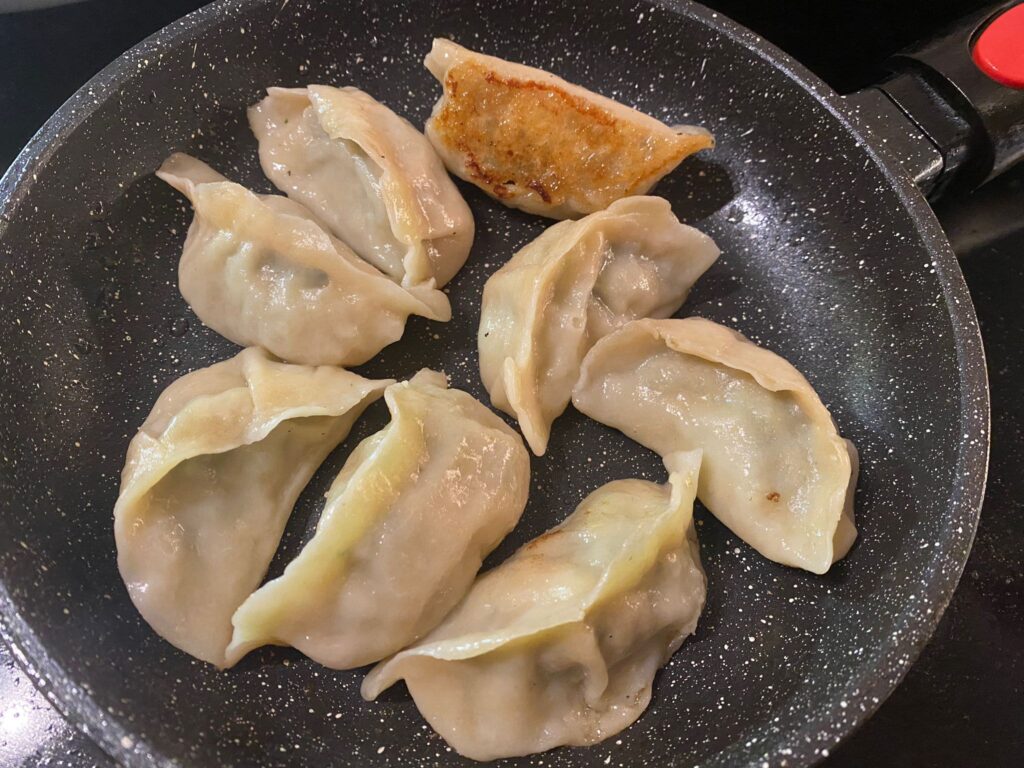
For Boiled Dumplings (水饺 shuǐ jiǎo):
1. In a pot, bring water to a boil and add the dumplings.
2. Wait for it to boil a second time, and add a large glass of cold water.
3. Wait for the water to boil a third time and add another glass of cold water.
4. Once the water comes to a boil for a fourth time, the dumplings are perfectly cooked!
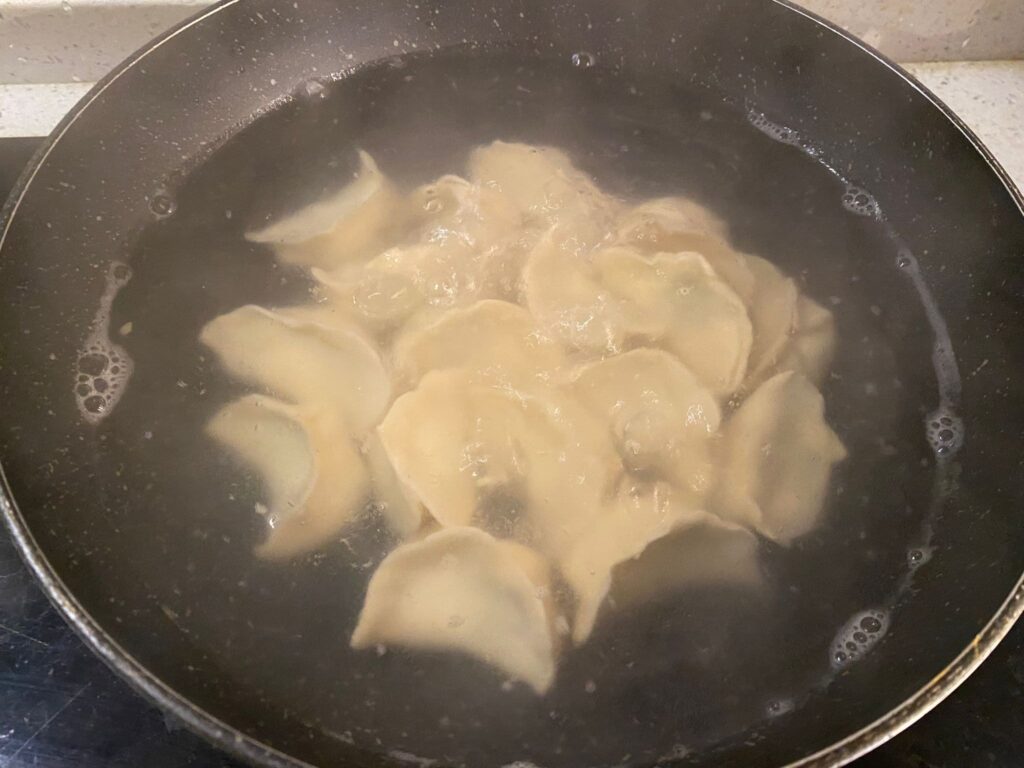
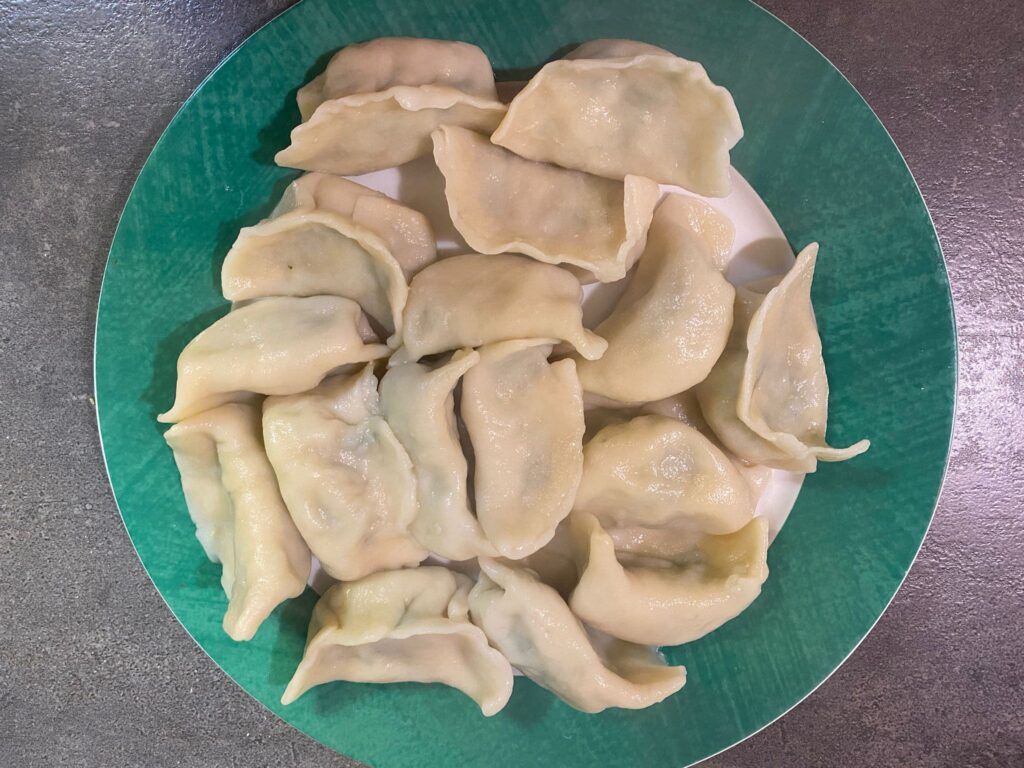
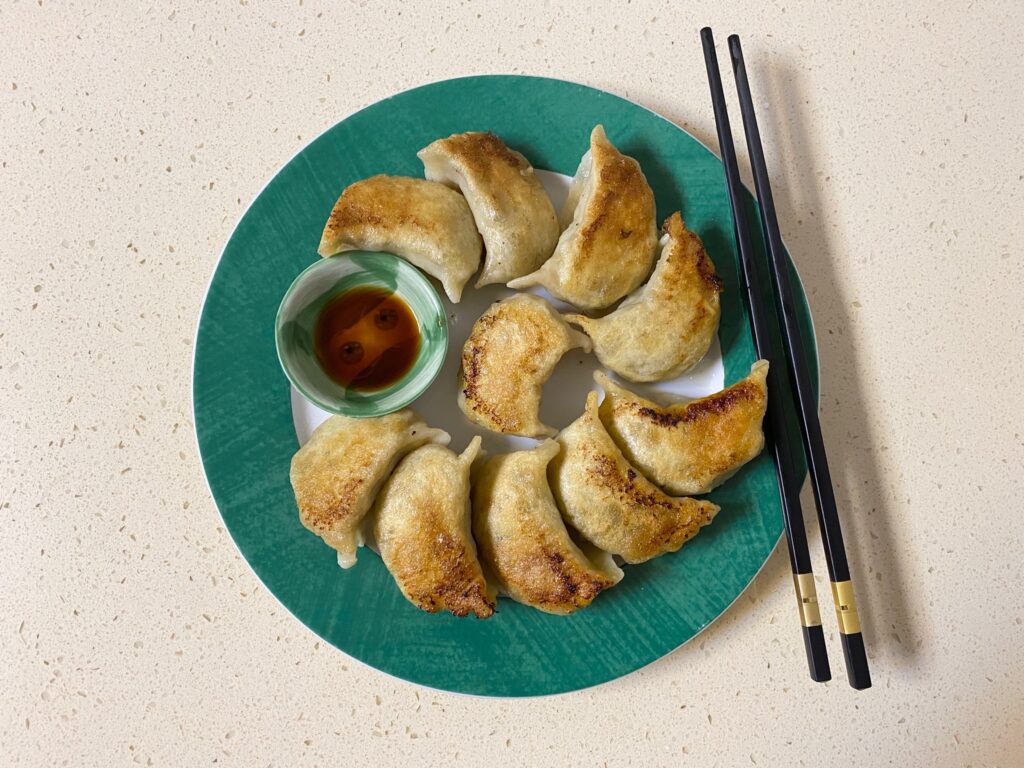
To learn even more about dumplings, here are three of our articles about Chinese dumplings you can read (premium):

